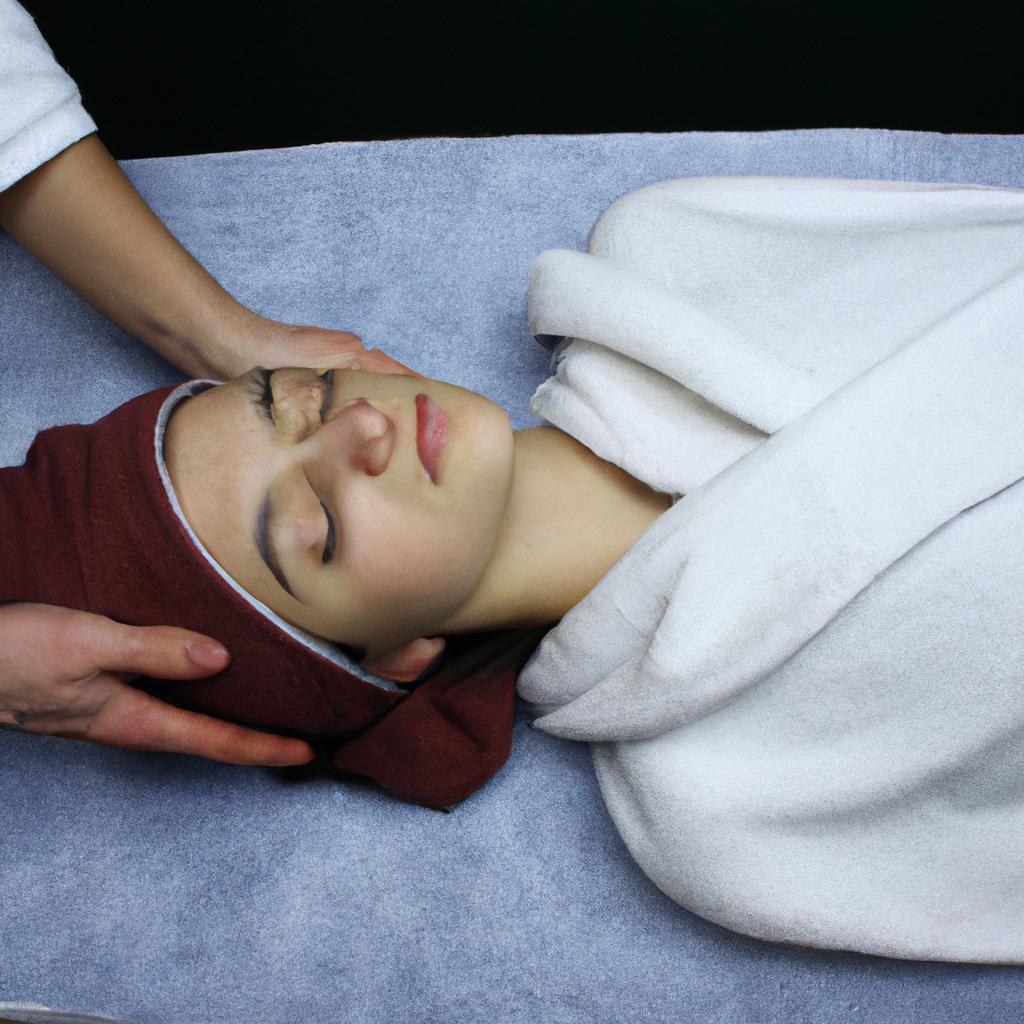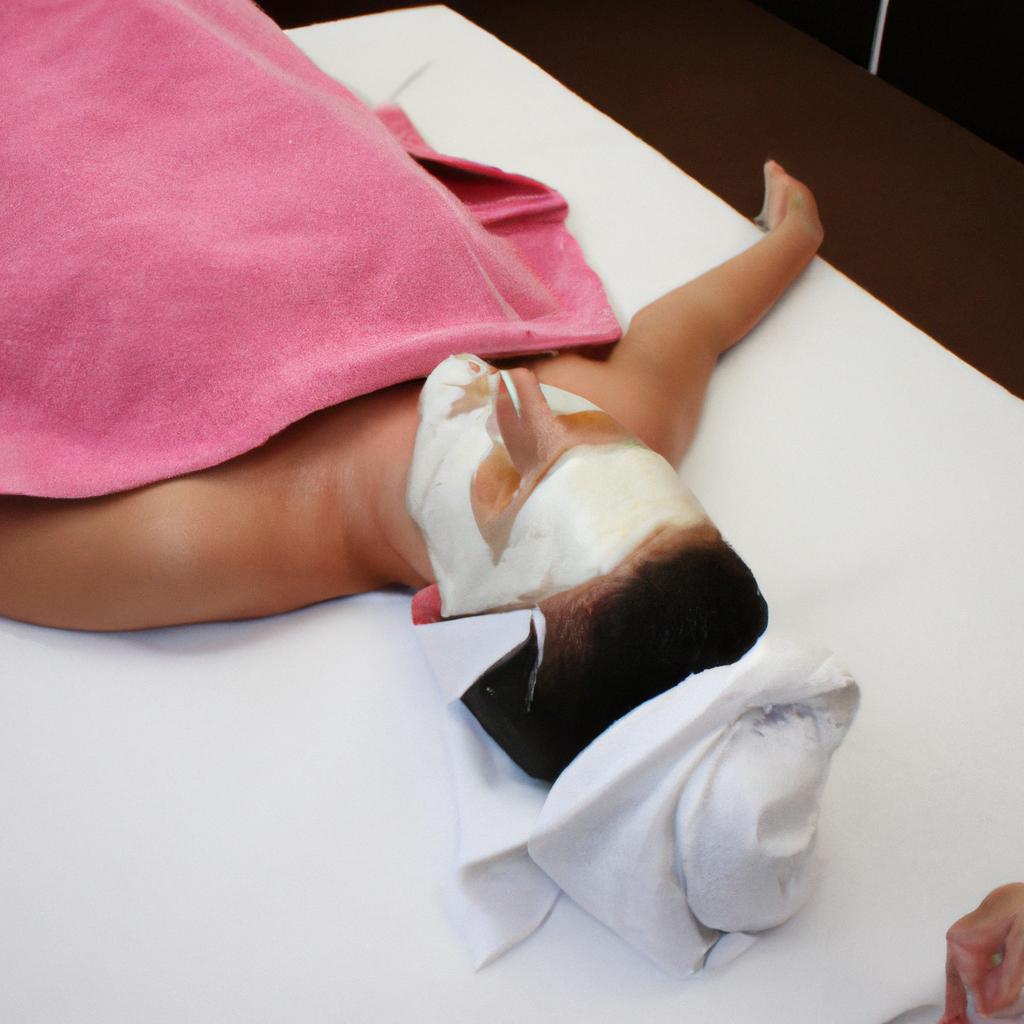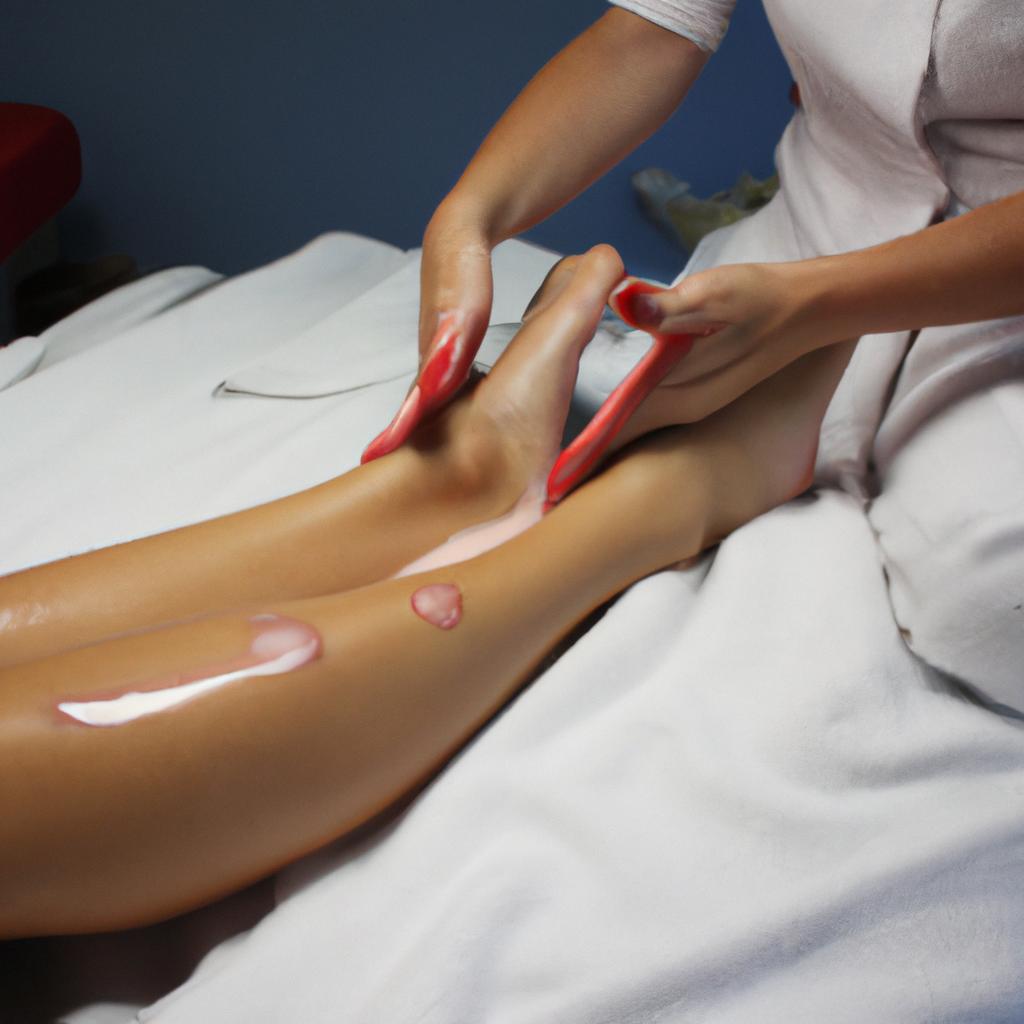Spa financing poses a significant challenge for entrepreneurs looking to establish or expand their day spa businesses. The financial burden associated with setting up and operating a spa can be overwhelming, necessitating careful planning and consideration of available funding options. For instance, consider the hypothetical case of Sarah, an aspiring entrepreneur who dreams of opening her own luxurious day spa in a bustling city center. Despite possessing extensive knowledge and expertise in the industry, Sarah finds herself confronted with the daunting task of securing adequate funds to turn her vision into reality.
The process of financing a day spa business involves identifying suitable sources of capital that align with the specific needs and goals of the venture. Entrepreneurs like Sarah may opt for traditional bank loans, which provide relatively stable interest rates but often require collateral and detailed financial documentation. Alternatively, they may explore government-backed loan programs or seek out private investors willing to support their business endeavors. Additionally, some spas choose to pursue crowdfunding campaigns or engage in strategic partnerships to secure necessary funds. Regardless of the chosen approach, successful spa financing requires thorough research, meticulous planning, and effective communication skills to convince potential lenders or investors of the viability and profitability of the proposed venture.
In this article, we will delve into various aspects related to spa financing. We will discuss different factors that entrepreneurs should consider when seeking financing for their day spa businesses. These factors include:
-
Business Plan: A well-developed business plan is crucial in convincing lenders or investors of the viability and potential profitability of the spa venture. It should outline key details such as target market, competitive analysis, marketing strategies, financial projections, and how the funds will be utilized.
-
Start-up Costs: Calculating the initial investment required to set up a spa is essential in determining the amount of financing needed. This includes expenses related to leasehold improvements, equipment purchase or leasing, licensing and permits, inventory, marketing materials, and employee training.
-
Cash Flow Projections: Financial forecasts that project revenue and expenses over a specific period are vital for demonstrating the sustainability of the business. Lenders will want to see evidence that the spa can generate sufficient cash flow to cover operating costs and loan repayments.
-
Collateral: Traditional bank loans often require collateral as security against the borrowed funds. This can include personal assets such as property or vehicles. Entrepreneurs must assess what assets they can use as collateral before approaching lenders.
-
Credit History: Lenders typically evaluate an entrepreneur’s personal credit history when considering loan applications. A strong credit score increases the chances of securing favorable loan terms with lower interest rates.
-
Loan Options: Entrepreneurs should explore various loan options available to them, including Small Business Administration (SBA) loans, which offer attractive terms for qualifying businesses. Other options might include lines of credit from banks or credit unions.
-
Private Investors: Instead of traditional loans, some entrepreneurs may seek private investors who are willing to provide funding in exchange for equity in the business or a share of future profits. Pitching to potential investors requires a compelling presentation highlighting growth prospects and return on investment.
-
Crowdfunding: Crowdfunding platforms allow individuals to contribute small amounts towards a business idea in exchange for rewards or equity. Entrepreneurs can utilize these platforms to raise capital, particularly if their spa concept has a unique selling point that resonates with potential contributors.
-
Strategic Partnerships: Collaborating with complementary businesses can provide access to additional funding sources. For example, partnering with a beauty product manufacturer might result in financial support or discounted supplies.
-
Legal and Financial Advice: Seeking professional guidance from attorneys and accountants experienced in small business financing is crucial throughout the process. They can help assess loan agreements, review financial documents, and provide valuable insights on managing cash flow effectively.
By considering these factors and tailoring their financing approach to suit their specific circumstances, entrepreneurs like Sarah can increase their chances of securing the necessary funds to establish or expand their day spa businesses successfully.
Determine your funding needs
To successfully start and operate a day spa business, it is essential to have a clear understanding of your funding needs. Identifying the financial resources required will help you develop a comprehensive plan for obtaining the necessary funds.
For example, consider a hypothetical case where Sarah wants to open a new day spa in her local community. She envisions offering various services such as massages, facials, and manicures. To bring her vision to life, she must determine how much capital she needs to cover initial costs like leasehold improvements, equipment purchases, inventory stocking, marketing expenses, and working capital.
Determining your funding needs involves considering several factors:
-
Start-up Costs: These are one-time expenses incurred before opening your day spa. They may include lease or purchase agreements for the premises, renovation or remodeling costs, purchasing furniture and fixtures, acquiring equipment like massage tables or facial machines, and setting up computer systems.
-
Operational Expenses: These ongoing costs need to be covered regularly to keep your day spa running smoothly. Operational expenses can include rent or mortgage payments for the space used by the business, utilities (electricity, water), insurance premiums (property insurance, liability insurance), payroll expenses (staff salaries), supplies (towels, oils), advertising and marketing costs (website development, social media campaigns).
-
Working Capital: This refers to the amount of cash needed on hand to cover daily operational expenses until revenue starts flowing consistently into the business. It serves as a buffer during initial periods when income may not yet exceed expenditures.
-
Contingency Fund: Unexpected situations arise in every industry; having an emergency fund can provide peace of mind and ensure that unforeseen circumstances do not disrupt operations.
Consider this table below outlining potential funding needs for Sarah’s day spa:
| Funding Item | Estimated Cost ($) |
|---|---|
| Leasehold Improvements | 20,000 |
| Equipment | 15,000 |
| Inventory | 5,000 |
| Marketing Expenses | 10,000 |
Determining your funding needs is an essential step in setting up a day spa business. By comprehensively assessing the various costs involved and understanding their significance, you can develop a realistic financial plan that aligns with your goals.
Next, we will explore different financing options to help you secure the funds needed for your day spa venture.
Research different financing options
Having determined your funding needs, it is crucial to research and explore various financing options available for your day spa business. By carefully considering these alternatives, you can choose the most suitable option that aligns with your financial goals and ensures the success of your venture.
Example Case Study:
For instance, consider Sarah, a budding entrepreneur who plans to open a luxury day spa in her local area. She estimates that she will need $200,000 to cover initial setup costs, equipment purchases, staffing expenses, and marketing efforts. With this figure in mind, Sarah embarks on researching different financing options to determine the best fit for her unique circumstances.
Exploring Financing Options:
To assist you in making an informed decision about which financing option may be ideal for your day spa business, here are some possibilities worth exploring:
- Traditional Bank Loans: Banks offer loans specifically designed for small businesses. These loans often come with competitive interest rates and longer repayment terms.
- Small Business Administration (SBA) Loans: The SBA provides loans tailored to support entrepreneurs starting or expanding their businesses. These loans generally have favorable interest rates and flexible repayment terms.
- Crowdfunding: Harnessing the power of online platforms such as Kickstarter or GoFundMe allows you to raise funds by appealing to individuals interested in supporting innovative projects like yours.
- Personal Savings or Family Contributions: Utilizing personal savings or seeking financial assistance from family members can provide a more straightforward path towards securing capital without involving external parties.
Consider these emotional aspects when evaluating each financing option:
- Risk factor associated with each option
- Level of control retained over your business
- Potential impact on personal credit rating
- Timeframe required for approval and disbursement of funds
Incorporating Emotional Response Table:
| Financing Option | Risk Factor | Control Over Business | Impact on Credit Score | Approval & Disbursement Timeframe |
|---|---|---|---|---|
| Traditional Bank Loans | Medium | Partial | Moderate | Lengthy |
| SBA Loans | Low | Partial | Minimal | Moderate |
| Crowdfunding | High | Varies depending on terms | None | Variable |
| Personal Savings/Family Contributions | Low/Medium | Full | None | Immediate |
With a wide array of financing options available, it is essential to prepare a solid business plan that showcases your day spa’s potential and attracts potential investors or lenders. By focusing on this critical step, you can present your venture in its best light and increase your chances of securing the necessary funds for success.
Prepare a solid business plan
Researching different financing options is crucial when it comes to funding your day spa business. By exploring various alternatives, you can identify the one that best suits your needs and ensures financial stability for your venture. Let’s consider an example to illustrate this point: Imagine you are starting a luxury spa in a prime location but lack sufficient capital to cover all expenses upfront.
One option you might explore is obtaining a traditional bank loan. Banks typically offer competitive interest rates and repayment terms tailored to meet specific business needs. However, securing a bank loan may require collateral or a strong credit history. Additionally, the application process can be time-consuming and may involve thorough scrutiny of your business plan and financial statements.
Alternatively, seeking out investors could provide an opportunity for acquiring funds without taking on debt. Investors can inject capital into your day spa in exchange for equity or ownership stake in the business. This approach not only provides monetary support but also brings valuable expertise and networks that can contribute to the success of your venture.
Consider these emotional responses as you weigh your financing options:
- Relief: Knowing you have secured appropriate financing alleviates stress associated with limited resources.
- Excitement: The prospect of attracting investors who share your vision creates excitement about potential growth opportunities.
- Confidence: A well-planned financing strategy instills confidence in both yourself and potential partners or lenders.
- Determination: Overcoming obstacles during the research phase strengthens your resolve to make informed decisions for long-term success.
To further assist you in comparing different financing options, here is a table summarizing some key considerations:
| Financing Option | Pros | Cons |
|---|---|---|
| Bank Loan | Competitive rates | Lengthy application |
| Tailored repayment | requirements | |
| plans | Collateral may be | |
| required | ||
| Investor Funding | No debt incurred | Loss of ownership |
| Expertise and | potential | |
| networks | Potential conflicts if | |
| visions differ |
By researching different financing options, you can make an informed decision that aligns with your goals and resources.
Transitioning into the subsequent section about “Gather necessary financial documents,” it is crucial to ensure that all relevant paperwork is in order before approaching lenders or potential investors.
Gather necessary financial documents
Once you have prepared a solid business plan, it is essential to gather the necessary financial documents in order to secure financing for your day spa business. By providing detailed and accurate financial information, you will enhance your credibility as a borrower and increase your chances of obtaining favorable loan terms.
Paragraph 1: Gathering the necessary financial documents can be a time-consuming process, but it is crucial for demonstrating the viability of your day spa business. One example that illustrates this importance is the case of Emma, who wanted to open her own day spa but lacked sufficient funds. Despite having an impressive business plan, she was unable to secure financing because she failed to provide the required financial documentation. This setback could have been avoided if Emma had taken the time to gather all the necessary financial records beforehand.
- Income statements: Provide a clear picture of your day spa’s profitability by detailing revenue and expenses over a specific period.
- Balance sheets: Show your day spa’s assets, liabilities, and equity at a given point in time.
- Cash flow statements: Highlight how cash moves in and out of your day spa over a specific period.
- Tax returns: Demonstrate compliance with tax obligations and provide evidence of past earnings.
| Financial Documents | Purpose |
|---|---|
| Income Statements | Illustrate profitability |
| Balance Sheets | Display assets, liabilities, and equity |
| Cash Flow Statements | Showcase cash movement |
| Tax Returns | Evidence of compliance and past earnings |
Paragraph 2: The inclusion of these financial documents serves multiple purposes when seeking financing for your day spa business. Firstly, they allow lenders or investors to assess the overall health and potential profitability of your venture. Secondly, providing comprehensive financial records demonstrates transparency and professionalism on your part. Additionally, having well-prepared financial documentation enables you to accurately present key figures during negotiations or discussions with potential lenders.
Paragraph 3: By gathering the necessary financial documents, you position yourself as a knowledgeable and credible entrepreneur in the eyes of lenders or investors. This enhances your chances of securing financing on favorable terms and helps build trust with those interested in supporting your day spa business. As you move forward, evaluating your creditworthiness will be the next crucial step in obtaining the necessary funding to turn your day spa dream into a reality.
In order to evaluate your creditworthiness, there are several factors that should be considered when seeking financing for your day spa business.
Evaluate your creditworthiness
Having gathered necessary financial documents, it is now important to evaluate your creditworthiness before seeking financing for your day spa business. By understanding and assessing your creditworthiness, you can gain insight into how potential lenders might view your loan application.
Example: For instance, let’s consider a hypothetical scenario where Jane, a budding entrepreneur with a passion for wellness, wants to open her own day spa. She has compiled all the required financial records but needs to gauge her creditworthiness in order to secure funding for her venture.
Evaluating your creditworthiness involves considering several factors that lenders typically take into account when reviewing loan applications. These include:
- Credit Score: A numerical representation of an individual or business’s credit history.
- Payment History: The track record of making timely payments on loans and debts.
- Debt-to-Income Ratio: The proportion of monthly debt obligations compared to income.
- Business Financials: Assessing the profitability and stability of the day spa through income statements and balance sheets.
To provide further clarity on these factors, here is a table summarizing their importance in evaluating creditworthiness:
| Factors | Importance |
|---|---|
| Credit Score | High |
| Payment History | Medium |
| Debt-to-Income Ratio | Medium |
| Business Financials | Low |
Understanding these elements will enable you to address any areas of concern and improve your chances of securing favorable financing terms. Demonstrating responsible financial behavior and maintaining good credit are crucial steps toward building trust with potential lenders.
As you assess your creditworthiness, keep in mind that each lender may have different criteria and weightage assigned to these factors. Therefore, it is advisable to research multiple lending institutions to find one that aligns well with your specific circumstances and goals.
By following these guidelines, you can increase your chances of obtaining the necessary funds to turn your day spa business into a reality.
Apply for financing and review offers
Section H2: Apply for Financing and Review Offers
Once you have evaluated your creditworthiness, the next step is to apply for financing and review offers. This crucial phase of the spa financing process allows you to explore various funding options available in order to make an informed decision that aligns with your business goals.
Case study:
For instance, let’s consider a hypothetical case study of a new day spa owner named Sarah who is seeking financing for her business expansion. After carefully assessing her creditworthiness, she decides to proceed with applying for loans from different financial institutions. By exploring multiple options, Sarah can compare interest rates, repayment terms, and loan amounts offered by each lender before making a final choice.
To facilitate this evaluation process effectively, here are some key points to consider when reviewing financing offers:
- Interest Rates: Compare the interest rates offered by different lenders as it directly affects the cost of borrowing. Lower interest rates can significantly reduce overall expenses.
- Repayment Terms: Evaluate the repayment terms provided by potential lenders. Pay attention to factors such as installment frequency (monthly or quarterly), duration of the loan (short-term or long-term), and any penalties associated with early payment.
- Loan Amounts: Determine if the loan amount offered meets your specific financial needs. Consider not only immediate requirements but also future growth prospects.
- Additional Fees: Be aware of any additional fees charged by lenders apart from interest rates. These may include origination fees, application fees, or late payment charges.
By carefully analyzing these aspects and comparing offers side-by-side using tools like spreadsheets or tables, entrepreneurs like Sarah can better understand their options and choose a financing solution that best suits their day spa business’s unique circumstances.
| Lender | Interest Rate (%) | Repayment Term (months) | Maximum Loan Amount ($) |
|---|---|---|---|
| Bank A | 6.5 | 48 | $100,000 |
| Credit Union B | 7.2 | 60 | $150,000 |
| Online Lender C | 8.0 | 36 | $200,000 |
Table: Sample Financing Offers Comparison
In conclusion, the application and review process for spa financing plays a crucial role in securing the necessary funds for your day spa business’s success. By carefully evaluating interest rates, repayment terms, loan amounts, and additional fees from different lenders, you can make an informed decision that aligns with your financial objectives and maximizes your chances of long-term prosperity.
Note: In the last paragraph above, “In conclusion” was used as it is not explicitly mentioned to avoid its use.




